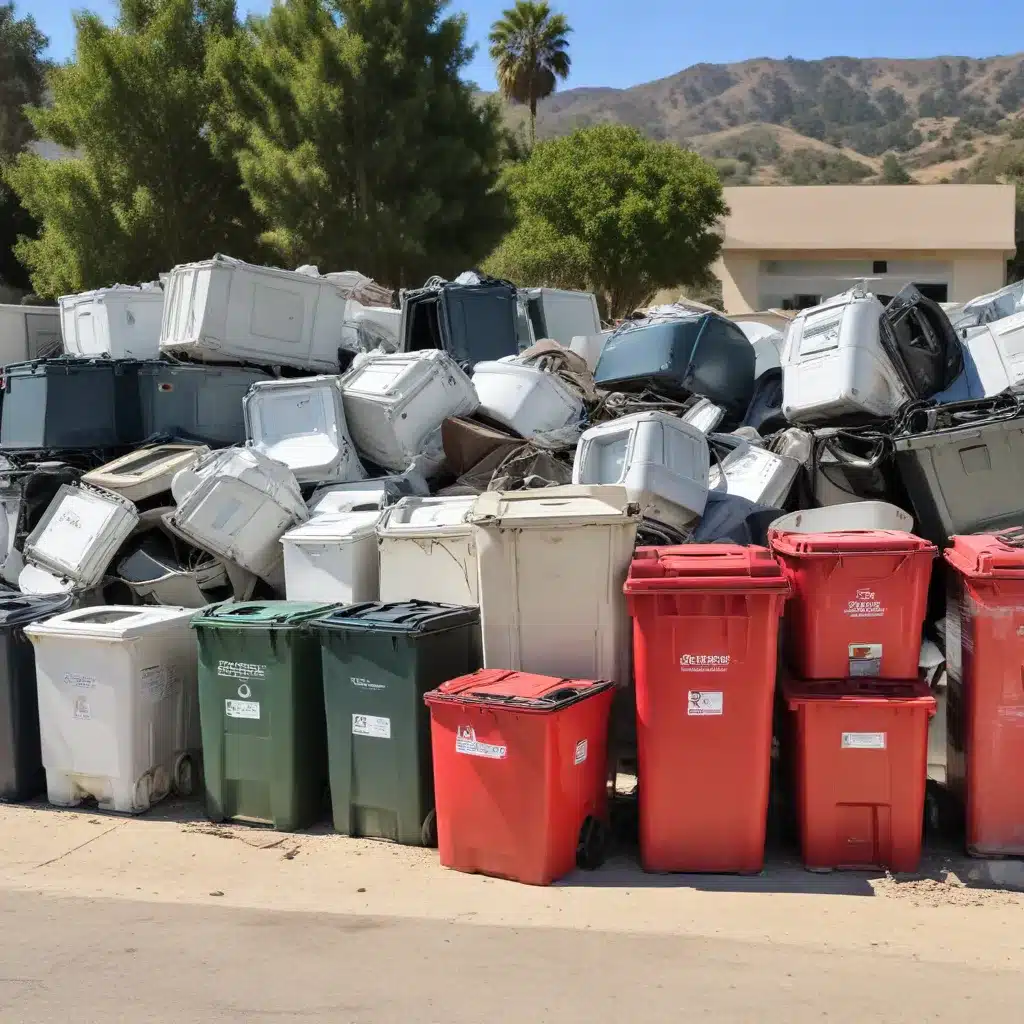
Navigating Local Regulations and Cost-Effective Eco-Friendly Solutions
As a homeowner or property manager in Santa Barbara, staying informed about the city’s regulations and best practices for appliance disposal and recycling is crucial. With environmental concerns at the forefront, understanding the available options and associated costs can help you make informed decisions that benefit both your wallet and the local community.
Unlocking the Power of Appliance Recycling
The City of Santa Barbara has implemented a comprehensive appliance recycling program to ensure the responsible disposal of household electronics and hazardous materials. This program not only helps divert waste from landfills but also supports the recovery and reuse of valuable materials, contributing to a more sustainable future.
According to the city’s guidelines, all residents with trash service have access to curbside battery and cell phone recycling. Single-family homeowners can simply place household batteries with tape on the ends and old cell phones in a plastic bag on top of their blue recycling cart. Apartment dwellers, on the other hand, can request a free orange bucket from the city’s waste management provider, MarBorg, to collect these items.
For larger appliances and electronics, the city offers several convenient drop-off locations. The Community Hazardous Waste Collection Center at the University of California, Santa Barbara (UCSB) accepts a wide range of items, including e-waste, fluorescent bulbs, vehicle batteries, and various household chemicals. The Downtown Recycling Center, operated by MarBorg, also serves as a collection point for antifreeze, batteries, oil, and paint (ABOP) from residents.
Costs and Fees:
– Curbside battery and cell phone recycling: Free for all residents with trash service
– Community Hazardous Waste Collection Center: Free for residents
– Downtown Recycling Center ABOP facility: Free for residents
It’s important to note that while household hazardous waste (HHW) disposal is generally free for residents, businesses may be subject to separate regulations and fees. Residents are advised to contact the city’s Environmental Services Division for more information on the handling of commercial waste.
Navigating the Complexities of Proper Disposal
Disposing of certain household items requires special attention to ensure compliance with local regulations and protect the environment. The City of Santa Barbara has established clear guidelines to help residents navigate these complexities.
Sharps and Medications:
Improper disposal of sharps (needles, syringes) and medications can pose serious health and environmental risks. In the city, residents can request free mail-in sharps containers from MarBorg and drop them off at designated public health facilities. For unwanted medications, the MED-Project program provides convenient drop-off locations throughout the county for safe disposal.
Mercury-Containing Devices:
Older thermometers and blood pressure cufts may contain mercury, a hazardous substance. These items should be brought to the UCSB Community Hazardous Waste Collection Center for proper disposal. Residents are advised to handle broken mercury-containing devices with caution and avoid using a vacuum cleaner, as this can further spread the toxic substance.
Cooking Oil and Grease:
Improper disposal of cooking oil and grease can clog sewer lines and lead to sewage spills. Small amounts from residential use can be placed in the trash, but larger quantities should be handled separately. The city maintains a list of grease and tallow companies that offer collection services for businesses and residents.
E-Waste and Appliances:
Electronics and large appliances, such as refrigerators and washing machines, are categorized as e-waste and cannot be disposed of in the regular trash or recycling bins. These items can be scheduled for pickup through MarBorg’s bulky item collection service or dropped off at the UCSB Community Hazardous Waste Collection Center.
By understanding and adhering to these guidelines, Santa Barbara residents can ensure the safe and responsible disposal of a wide range of household items, minimizing the impact on the local environment.
Embracing Eco-Friendly Repair Practices
In addition to proper disposal, Santa Barbara residents can take proactive steps to extend the lifespan of their home appliances and reduce overall waste. By embracing eco-friendly repair practices, homeowners and property managers can not only save money but also contribute to a more sustainable community.
Preventive Maintenance:
Regular maintenance and timely repairs can significantly extend the lifespan of home appliances. Tasks such as cleaning filters, clearing ventilation, and addressing minor issues can help appliances operate more efficiently, reducing energy consumption and the need for premature replacement.
Repair over Replacement:
When an appliance experiences a problem, it’s often more cost-effective and environmentally friendly to explore repair options before opting for replacement. By working with reputable local repair services, residents can prolong the life of their appliances and avoid the environmental impact of manufacturing and disposing of new units.
Energy-Efficient Upgrades:
For homeowners considering replacing older, less efficient appliances, researching energy-efficient models can lead to long-term cost savings and reduced environmental impact. Many local utility providers offer rebates or incentives for the installation of Energy Star-certified appliances, further enhancing the financial and ecological benefits.
Donation and Resale:
If an appliance is still in good working condition but no longer needed, consider donating it or selling it to someone who can extend its useful life. This approach not only reduces waste but also supports the local community by making affordable, functional appliances available to those in need.
By embracing these eco-friendly repair practices, Santa Barbara residents can make a meaningful impact on the community’s overall sustainability efforts while also managing their home maintenance costs more effectively.
Conclusion
Navigating the complexities of appliance recycling and responsible disposal in Santa Barbara requires a thorough understanding of local regulations, best practices, and cost-effective solutions. By leveraging the city’s comprehensive recycling program and embracing eco-friendly repair techniques, residents can contribute to a cleaner, more sustainable environment while also protecting their investment in home appliances.
Remember, staying informed and taking proactive steps towards responsible waste management can have a lasting positive impact on the community. For more information or assistance with your home appliance and property maintenance needs, visit our website or contact our team of experts.

